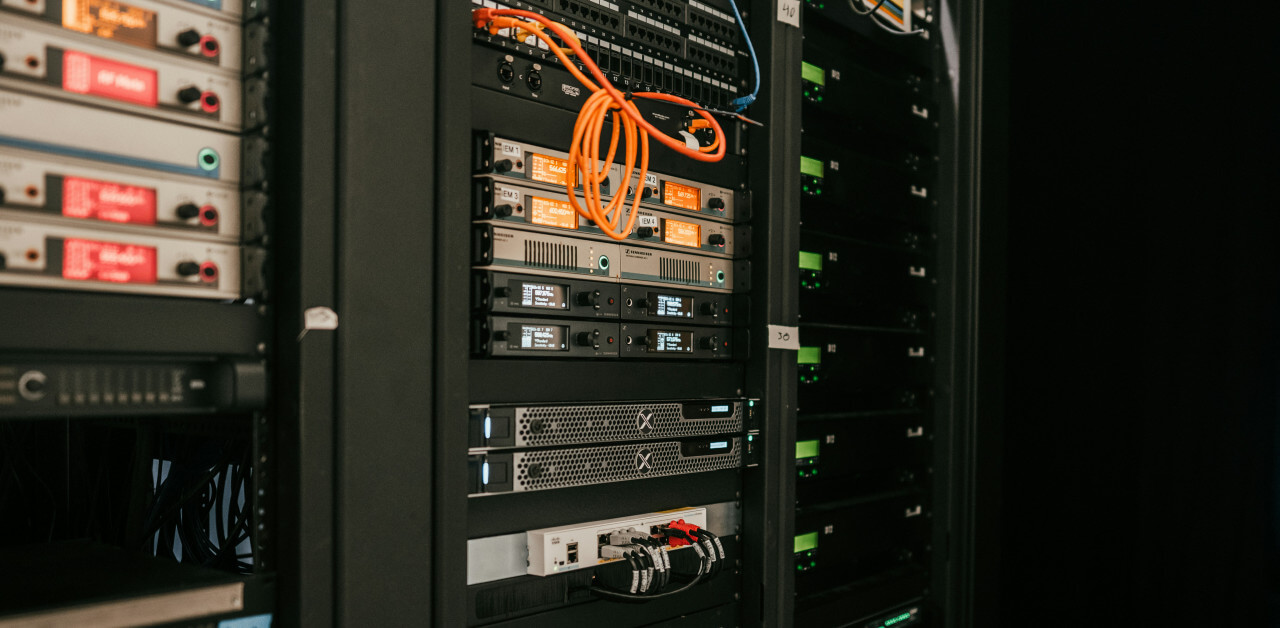What Is the Difference Between Server Monitoring and Website Monitoring?
With the digital landscape being the most important thing in today’s world, corporations and organizations must keep their online services running without glitches. Availability and steady performance are what any visitor would value in web success. These two factors can easily sway a user from having positive or negative experiences.

Server monitoring is too often confused with website monitoring, and we tend to think that they deal with the same needs; however, they do not, and their observations differ as well. Server monitoring will always focus on back-end infrastructure health and performance, while website monitoring will focus on how users interact with the site in front-end environments. This article will dive into the great distinctions between server monitoring and website monitoring and elaborate on why they both matter in a holistic monitoring approach.
What is Server Monitoring?
Server monitoring is the holistic analysis of the performance, stability, and availability statuses of servers, ensuring their effectiveness and reliability. It has come to take an inclusive and indispensable role in modern IT environments since a very small inconvenience in server operations can translate to server downtimes, losses in revenue, and poor user experiences.
Servers are today serving the backbone to that digital infrastructure on which users perform work every day: host websites, applications, databases, and services. Therefore, maintaining them is a very significant operational concern. Monitoring includes physical servers located on-premise and virtual servers in the cloud. Using monitoring agents, it is possible to analyze real-time data obtained from the server, such that it becomes possible to detect irregularities, trigger alerts for any possible failure, and have IT teams take action before small problems become very large ones.
Apart from failure and outage detection, server monitoring will form the basis for performance optimization in a long future. By this means, trends are analyzed over time for system administrators to effectively plan for upgrades and allocate resources to achieve optimal performance from the servers. In simple words, every organization-obligatory size will have holistically incorporated server monitoring as part and parcel of a strong IT infrastructure.
Key Aspects of Server Monitoring
Server Monitoring Key Areas include:
CPU Utilization
Central Processing Unit utilization indicates how much processing power is being consumed during a particular instant. Its high and mostly spiked usage could mean that the server is under strain maybe from poorly written code, overactivity from applications, and/or malicious activity. By identifying the highs and retaining it as a collection of the trends’ data points, one can diagnose performance issues earlier in the life of the application and optimize or scale.
Memory Usage (RAM)
This refers to the amount of Random Access Memory (RAM) being utilized by the server. In case the level is considerably high, then the server may slow down or eventually crash when running multiple applications because they tend to use most of the memory. Monitoring ensures effective allocation and prevents resource drain.
Disk Usage and State of Health of Storage
You have to track the disk space available for running service applications. Disk full can cause an application either to fail or hang. Disk health checks will also reveal disk problems like bad sectors or disks on their way to failing, which can cause data loss.
Network Activity
The monitoring of traffic coming into and out of the server. Unusual spikes in traffic could indicate DDoS attacks, data exfiltration, or possible misconfiguration in the network. There is no optimum bandwidth that guarantees 100% flawless performance. Network monitoring will also help in the early discovery of some security threats.
Server Health Monitoring
Monitoring is available to ensure active and correct functionality within the main operating services, such as databases, email servers, or APIs. For example, the test in monitoring may check whether a service is turned on when it is expected to be turned off. An alert would be generated immediately when a service, like failing or behaving abnormally, triggers an alarm so that administrators can take steps quickly.
System logs and events
The information gained from system logs indicates errors concerning application software. It also indicates attempts for unauthorized access and may reveal patterns in the system’s behavior. It is an important function of monitoring logs concerning security auditing, troubleshooting, and compliance.
Tools for Server Monitoring
- Nagios
- Zabbix
- Datadog
- SolarWinds
- Prometheus
What is Website Monitoring?
Website monitoring is the process of continuous checking and evaluation of a website’s availability, performance, and functionality- it’s all to give a seamless experience to users. In a broad sense, website monitoring is very different from server monitoring, which is concerned with the backend infrastructure aspects of monitoring; website monitoring is concerned with the end-user behavior of the website. Its primary role is to figure out issues that could interfere with user access, slow loading of pages, or prevent users from key actions like browsing, logging in, and shopping.
Increasingly digitized as the world is, an online website is becoming a business’s first point of customer contact. Even minutes of downtime, very slow loading page times, and dysfunctional functions can amount to millions of dollars lost in revenue, tarnished reputations, and wasted costs due to diminished trust from customers. That’s where website monitoring comes in, it minimizes these risks by real-time informing and alerts when things go wrong.
Of course, monitoring can be done through some automated tools simulating user actions and running tests in intervals, but actually, it can be done also manually. The automated tools run 24/7 to ensure the site is up and performing excellently across various devices, browsers, and geographies.
Key Aspects of Website Monitoring
Here are some core components of an effective website monitoring:
Monitoring uptime
Regularly, it will check the status at a minimum of every minute to see if the site is responding or not to the requests. Whenever it goes down, alerts are dispatched instantly, informing the teams to perform a rapid corrective action and minimize interruption of service.
Speed of page loading
Web Site loading speed directly impacts user experience and ranks a website. In addition, website monitoring tools offer an analysis of page load times for various devices and browsers. They also help in identifying such bottlenecks as images that are too large, scripts that are not optimized, or a server response delay that in one way or another slow down the performance.
Transaction Monitoring
Log in and fill forms, make purchases, open a page, and so forth by doing the operations mimicking the actual intent of a user on the site. This will ensure that all critical functions are working perfectly and notify teams when there’s a hitch at any step.
SSL Certificate Monitoring
An SSL cert, with its usage, makes the data secure between a website and the users during the transfer. Website monitoring tools validate their positive status and check their expiry.
Verification of the content and defacement detection
These monitoring tools would also help detect unauthorized modification of the website contents, which is an essential feature in prevention or emergency intervention in case of hacking or defacement attack. They cause alerts to be triggered upon authentication of any variations.
Testing at multiple locations
It is not only with site speed but also with availability that website monitoring tools, in most cases, will conduct their testing from different countries. This is a very important feature in detecting location-based failure of the site and optimizing content delivery.
Tools for Website Monitoring
- Super Monitoring
- Pingdom
- UptimeRobot
- GTmetrix
- New Relic (Synthetics)
- Site24x7
- more website monitoring tools
Key Differences Between Server Monitoring and Website Monitoring
| Feature | Server Monitoring | Website Monitoring |
|---|---|---|
| Focus | Backend infrastructure | Frontend user experience |
| Monitors | CPU, memory, disk, network, system uptime | Website uptime, page speed, transactions, and SSL |
| Goal | Ensure optimal server performance | Ensure optimal user experience |
| Alerts For | Server overloads, failures, and resource depletion | Website downtime, broken links, and slow loading |
| User Perspective | Admin/IT-centric | Customer/end-user-centric |
Why Both Are Essential?
Therefore, the monitoring of servers as well as websites fulfills distinct purposes, which, when married together, would complement one another in ensuring the faultless and efficient performance of digital services. Much reliance on one would draw their attention away from the dark spot that an unmonitored strategy poses.
Server monitoring is mainly about health in the backend infrastructure, such as CPU load, memory, utility by storage capacity, even the status of server-side applications. It checks that the systems that sustain your website or application work well. Without server monitoring, indications of hardware failure, depletion of available resources, or crashes in applications at a serious outage level could pass unnoticed until it is too late for drastic remedial measures to be implemented.
In contrast to monitoring the website, this would purely give the end user level insight. It checks if the site is accessible and responsive from different locations and devices as well and is functioning well to expectation. Even though the server is running, the users may have problems caused by broken links, expired SSL certificates, or slow page speeds, all problems that will not be detected by pure server monitoring.
In addition, the use of automation for both types of monitoring improves effectiveness manifold. These tools carry out real-time checks on a continuous basis and alert IT teams of any anomalies, often ahead of users even noticing there is a problem. With automation, manual surveillance is negated, thereby reducing human error and continuously monitoring the environment.
Conclusion
When it comes to server monitoring and website monitoring, people are most likely to mention both as one thing. However, they are different and are associated with different purposes. Server monitoring ensures that the backend infrastructure isn’t only stable but also scalable, while monitoring a website is dedicated to the experience of the end user.
Both of these play a role in defining the framework within which digital reliability lies. Organizations can use both to proactively identify problems before they occur to minimize downtime, enhance user satisfaction, and keep their digital environments in good working order.
About the Author

Robert Koch – experienced SaaS application designer and business optimization through automation consultant. An avid home brewer and cheesemaker in his spare time.






